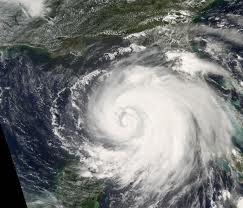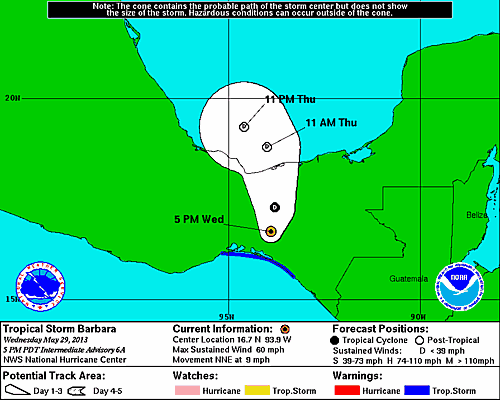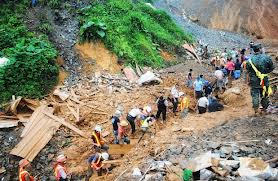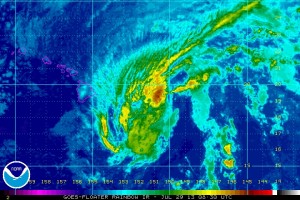
Tropical storm Flossie packs a direct hit onto the Hawaiian Islands – NOAA.
Talk about a double whammy. A tropical storm warning is in effect for the Windward Coast of Oahu just after it experienced a small 3.5 magnitude earthquake today, Monday July 29, 2013.
The good news – no tsunami warning is out, but a flash flood watch is issued through late Tuesday night along the main Hawaiian Islands.
Tropical storm Flossie is weakening as it impacts Hawaii, but its torrential rains are dangerous as the storm hits the island of Oahu. It is the first tropical cyclone to make landfall on the Hawaiian islands since 1992, and it’s a direct hit.
Lots Of Rain
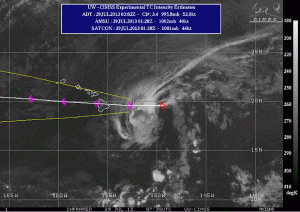
Satellite image of Tropical Storm Flossie taking a direct hit onto the Hawaiian Islands, July 29, 2013.
The storm is expected to bring 6 to 10 inches of rain over Maui and the Big Island, with up to 15 inches possible in isolated locations, and 4 to 8 inches of rain over Oahu and Kauai, with isolated maximums of up to 12 inches possible.
Sustained winds up to 45 miles per hour are expected, and a “dangerously high surf” is already hammering eastern-facing shores of the Big Island, and will soon spread to the other islands and continue through Tuesday.
The entire state is under a tropical storm warning and a flash flood watch through Tuesday night.
I wish everyone a safe “next couple of days.” … and NO SURF’s UP, guys.
